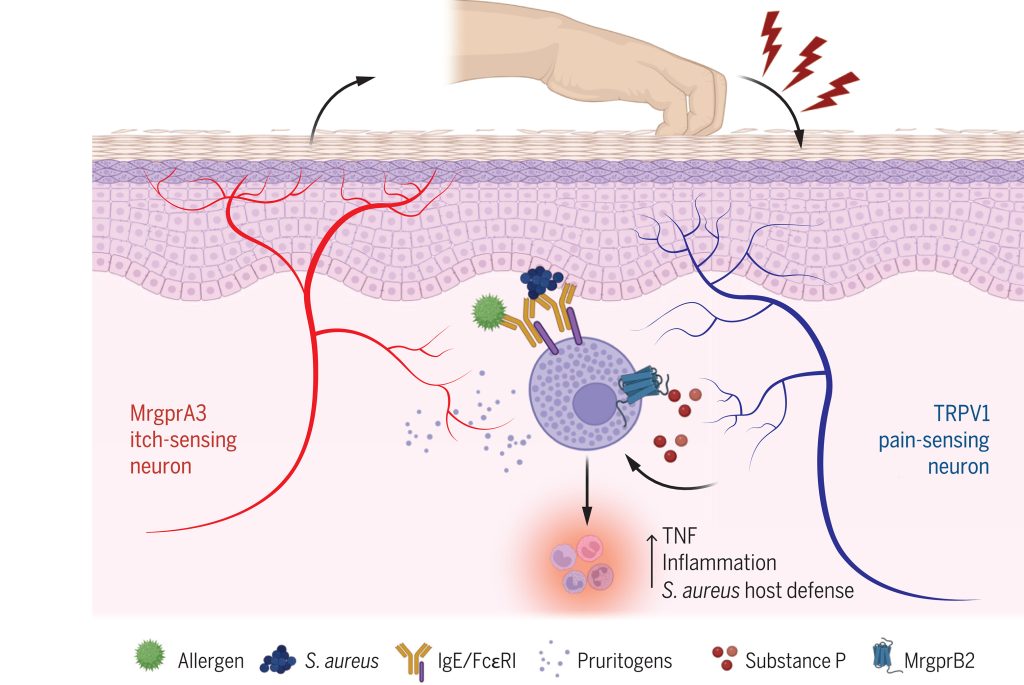Scratching promotes allergic inflammation and host defense via neurogenic mast cell activation
Andrew W. Liu1,2, Youran R. Zhang1,2, Chien-Sin Chen1,2, Tara N. Edwards1,2, Sumeyye Ozyaman1,2†,
Torben Ramcke1,2, Lindsay M. McKendrick1,2, Eric S. Weiss1,2, Jacob E. Gillis1,2, Colin R. Laughlin2‡,
Simran K. Randhawa2, Catherine M. Phelps2, Kazuo Kurihara1,2, Hannah M. Kang1,2,
Sydney-Lam N. Nguyen1,2, Jiwon Kim3, Tayler D. Sheahan3§, Sarah E. Ross3,4, Marlies Meisel2,5,
Tina L. Sumpter1,2, Daniel H. Kaplan1,2*
1Department of Dermatology, University of Pittsburgh, Pittsburgh, PA, USA. 2Department of Immunology, University of Pittsburgh, Pittsburgh, PA, USA. 3Department of Anesthesiology, University of Pittsburgh, Pittsburgh, PA, USA. 4Pittsburgh Center for Pain Research, Pittsburgh, PA, USA. 5Cancer Immunology and Immunotherapy Program, UPMC Hillman Cancer Center, Pittsburgh, PA, USA.
*Corresponding author. Email: dankaplan@pitt.edu
†Present address: Department of Histology and Embryology, School of Medicine, Istanbul Medipol University, Istanbul, Turkey.
‡Present address: Department of Immunobiology, Yale University, New Haven, CT, USA.
§Present address: Department of Cell Biology, Neurobiology and Anatomy, Medical College of Wisconsin, Milwaukee, WI, USA.
Editor’s summary
Itch, the sensation that stimulates scratching behavior, is often triggered by skin irritants and inflammation. Liu et al. found that ablating itch-sensing neurons or physically preventing scratching decreased the inflammation associated with antigen-dependent mast cell responses in response to chemicals that induce allergic immune responses (see the Perspective by Ver Heul). Scratching promoted pain-sensing neurons to release a neuropeptide that stimulated mast cells, and this peptide hormone synergized with antigen-dependent activation to increase the mast cell’s degranulation and ability to produce inflammatory mediators. In a model of skin infection associated with antigen-specific mast cell responses, scratching contributed to decreasing the bacterial load. —Sarah H. Ross

